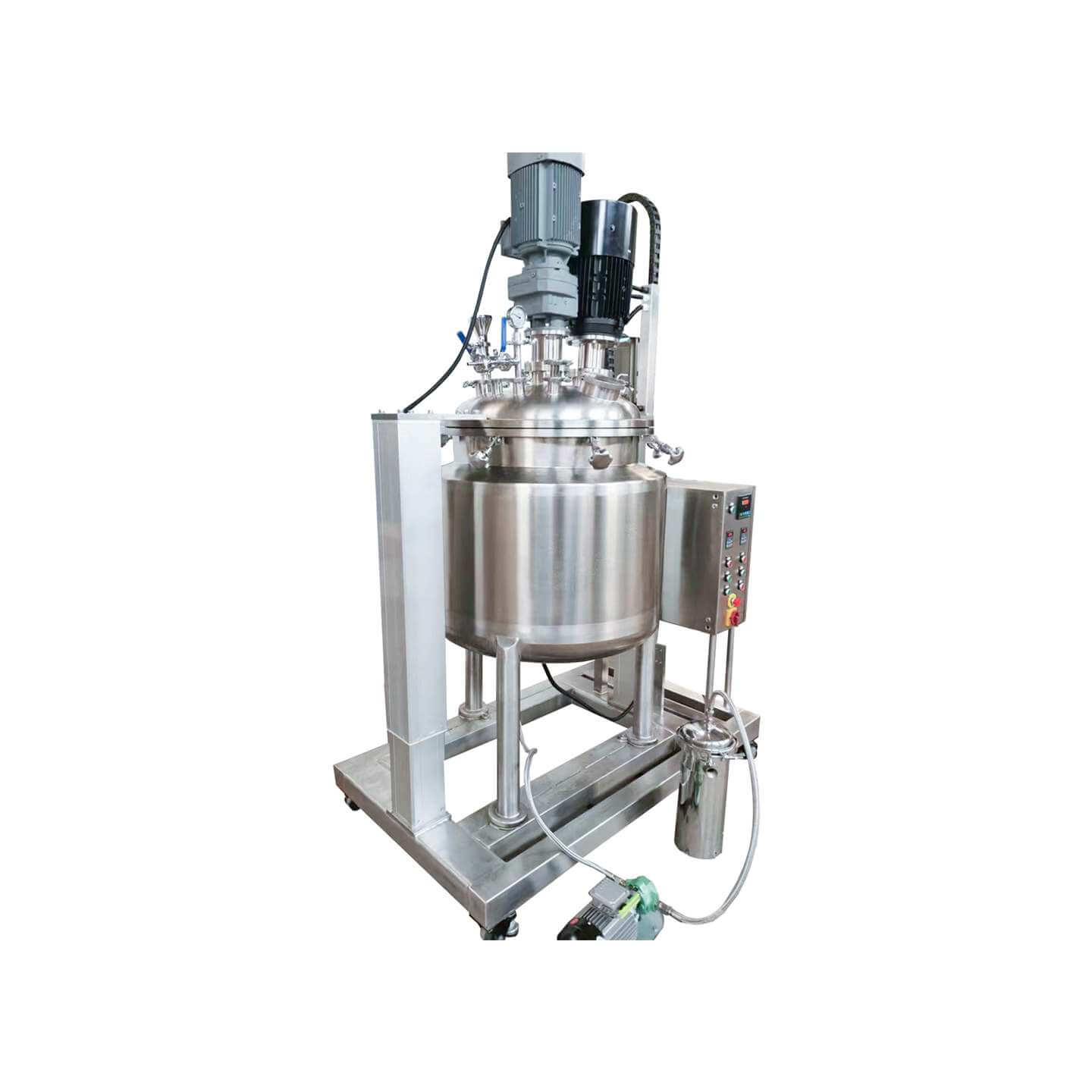


Laboratory Reactor
Laboratory reactor: used in the chemical industry, pesticide, paint, and other fields
Material
glass, stainless steel (316, 304), carbon steel, others
Capacity (L)
10-10000+
Mixing system
anchor, paddle, frame and others
Heating system
electric heating, oil heating and others
The laboratory reactor is small in size, beautiful in appearance, light, and fast in installation. It is composed of a pot body, pot cover, stirrer, jacket, support and transmission device, shaft sealing device, etc. The type of stirring device, rotation speed, sealing structure, heating method, etc. are produced.
Request a quoteThe valve part of the RUNGYU laboratory reactor is equipped with a gas phase valve, liquid phase valve (also known as bottom pipe valve), safety blasting valve, feed valve, and discharge valve, which can be increased or decreased according to requirements. The structure of its valve is a reciprocating structure, which is characterized by a sealing life that is 1.5 times longer than that of a rotary valve. The blast valve is equipped with double safety devices and single safety devices.

The rotating stirring of the laboratory reactor adopts a cylindrical magnetic coupling structure. The amount of torque is determined by the magnetic material. Generally, strong magnetic rare earths are used, and their coupling force is relatively large. The blades of the experimental reactor can be replaced as needed, and the main components such as slurry, anchor, frame, spiral worm gear, and other components can be selected according to the viscosity of various substances. The kettle body and lid are sealed using a triangular seal, which ensures long service life.
The laboratory reactor kettle adopts a two-open snap ring for fastening and sealing. The snap ring rests freely on the shoulders of the kettle body and the kettle lid. The eight main fastening bolts are evenly tightened to make the kettle tightly sealed. When discharging, loosen the 8 main bolts and open the snap ring to lift the kettle lid, which is labor-saving and convenient. The lid of the laboratory reactor kettle is connected to the guide post through a lifting arm. Shake the lifting handwheel and move the lifting screw to make the kettle lid move up, down, left, and right on the guide post. The ball reduces the movement of the lifting arm. Free movement is unimpeded by friction. Rotation of the lid of the laboratory reactor kettle and tilting and repositioning of the kettle body. First, lift the cauldron lid to a certain height through the lifting handwheel and lifting screw, then loosen the fastening hand on the boom, and press the positioning movable button with your hand to make the cauldron lid rotate left and right. Then loosen the fastening handle on the rotating seat, press the rotating hook, and turn the dumping handwheel to ensure that the laboratory reactor kettle body maintains a certain dumping angle, and then release the rotating hook to dump the material. When the kettle body needs to be reset, shake the dumping handwheel and hold down the rotating button to quickly reset it.
Advantages of laboratory reactors
1.Unique sealing method:
Since the thermal expansion coefficient of the PTFE lining in the dissolving bottle is larger than that of the bottle shell, PTFE can easily relax and leak when the bottle is heated, especially when cooled. In order to avoid this phenomenon, all dissolution bottles of laboratory reactors are equipped with load-bearing spring lids, which can continuously maintain pressure on the sealing surface during the entire operation.
2.Strong corrosion resistance:
The laboratory reactor is made of polytetrafluoroethylene material, which can resist the corrosion of various strong acids and strong alkali so that inorganic and organic materials such as ore and glass can be processed quickly in strong acid and strong alkali solutions. Dissolve.
3.Easy to operate:
The laboratory reactor uses a unique wrench that can be opened and tightened easily and quickly. It has the characteristics of easy operation.
4.Speed up the analysis process:
The laboratory reactor maintains strong acids and bases at a temperature above the boiling point in a convenient form. Compared with dissolving in an open container at normal temperature and pressure, it speeds up the dissolution of samples and shortens the operation progress.




